How to Support Trap-Neuter-Return Programs for Cats

Thus, Trap-Neuter-Return (TNR) programs offer a humane and very effective approach to the management of free-roaming feline populations.
You can make a critical difference in the lives of these animals and contribute to neighborhood harmony by being aware of and promoting such efforts.
Table of Contents
How TNR Programs Work
Trap-Neuter-Return, commonly referred to as TNR, is a practice in which community cats are humanely trapped, spayed or neutered, vaccinated, and then returned to their original outdoor locations.
This approach stabilizes and eventually reduces the population of free-roaming cats.

What is TNR?
TNR consists of a series of steps as part of managing and caring for community cats:
- Trapping: Using humane traps to capture cats without causing them harm.
- Neutering/Spaying: Performing surgery to make them sterile and incapable of reproducing.
- Vaccination: Providing vaccinations against rabies and other diseases.
- Return: Returning the cats to the colony where they are accustomed to living.
This process has the dual benefit of controlling the growth of cat colonies and reducing mortality rates among the affected cats.

Benefits of TNR for Community Cats
The advantages of conducting TNR programs include:
- Population Control: By preventing new litters, TNR reduces the overall number of cats over time.
- Health Improvements: Neutered cats are less prone to certain diseases and injuries related to mating behaviors.
- Behavioral Changes: Neutering may decrease nuisance behaviors, such as yowling, spraying, and fighting.
- Community Harmony: Fewer cats with fewer disruptive behaviors lead to better relationships between residents and cats.
These benefits outline precisely why TNR is considered both a humane and effective method of controlling community cat populations.

Common Misconceptions About TNR
Despite its documented success, TNR is often misunderstood.
Let’s clear up a few common misconceptions:
- TNR Attracts More Cats: Returning neutered cats holds the territory and prevents new, unneutered cats from moving in.
- Relocation is Better: Relocating cats is a stressful and usually unsuccessful procedure. Cats are territorial and do best in their familiar environments.
- TNR Does Not Work: Many studies have demonstrated that TNR effectively reduces and stabilizes cat populations over time.
Understanding these points helps dispel myths and encourages the wider adoption of TNR practices.

Success Stories of TNR Initiatives
Many communities have documented positive outcomes from TNR programs.
For instance, in some neighborhoods, dedicated volunteers have significantly reduced the number of free-roaming cats, leading to healthier colonies and fewer complaints from residents.
Success stories like these highlight the real-life benefits of TNR and inspire other communities to start similar programs.
TNR programs effectively manage and control free-roaming cat populations, improving their health and ensuring humane treatment.

Getting Involved in TNR Efforts
Getting involved in a Trap-Neuter-Return (TNR) program is one of the most rewarding things you can do to help community cats and to humanely control the population.
Your involvement will make a significant difference in the lives of these cats and will also enhance the quality of life in your neighborhood.
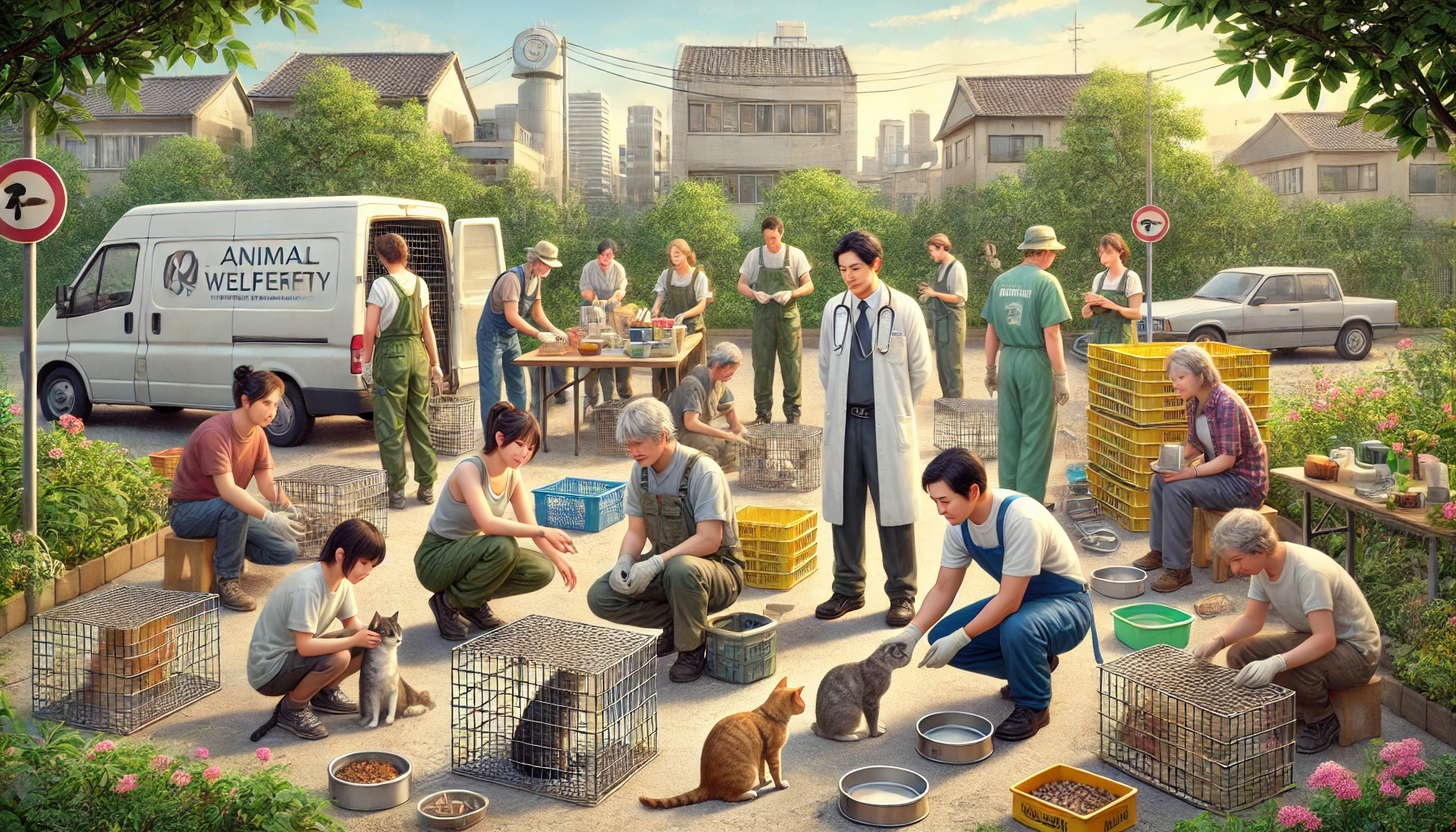
Volunteering with Local Organizations
Many animal welfare organizations rely on volunteers to help with TNR activities.
Through these organizations, volunteers can engage in various tasks, including trapping, transporting cats to veterinary clinics for surgery, and providing post-surgery care.
For instance, the Humane Society of Charles County’s TNR program depends on volunteers for trapping services, transport to and from surgery, and recovery care after surgery.
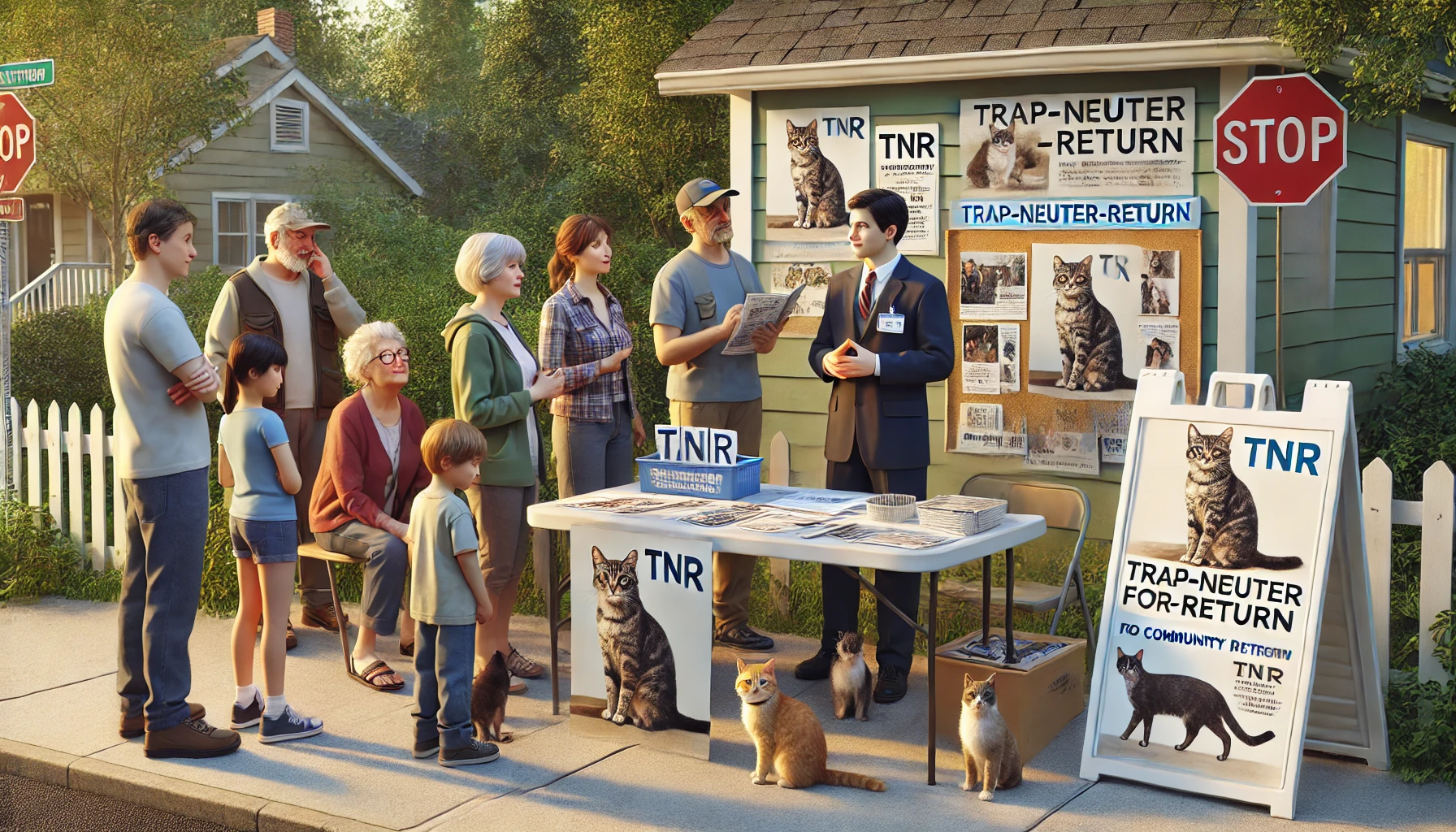
Participating in Community Outreach and Education
The more people understand the benefits of TNR, the more support these programs receive.
You can contribute by distributing literature, organizing workshops, or making presentations at local events to share information.
Educating your neighbors eliminates misconceptions about TNR, inspiring more people to get involved.
Organizations like Bideawee’s Feral Cat Initiative offer free training and resources to help educate and build support for TNR within your community.
Assisting with Trapping and Transportation
Hands-on involvement is critical to the success of TNR programs.
Learning how to humanely trap cats and transport them to veterinary clinics ensures the process is safe and efficient.
Many organizations offer in-person training sessions for volunteers in these roles.
For example, All About Animals Rescue in Michigan provides in-person TNR training that equips volunteers with the necessary skills.

Providing Post-Surgery Care for Cats
After surgery, cats need a safe space to recover before being released back to their colonies.
Volunteers can offer their homes or facilities for short-term recovery care, monitoring the cats for any postoperative complications and ensuring they are ready for release.
This step is essential for the well-being of the cats and contributes to the overall success of the TNR program.
Your active participation in these aspects of TNR efforts means you are contributing to a humane solution for community cat population control, fostering a more compassionate community in the process.
By volunteering or advocating, individuals can play a key role in the success of TNR programs, supporting humane solutions for community cats.
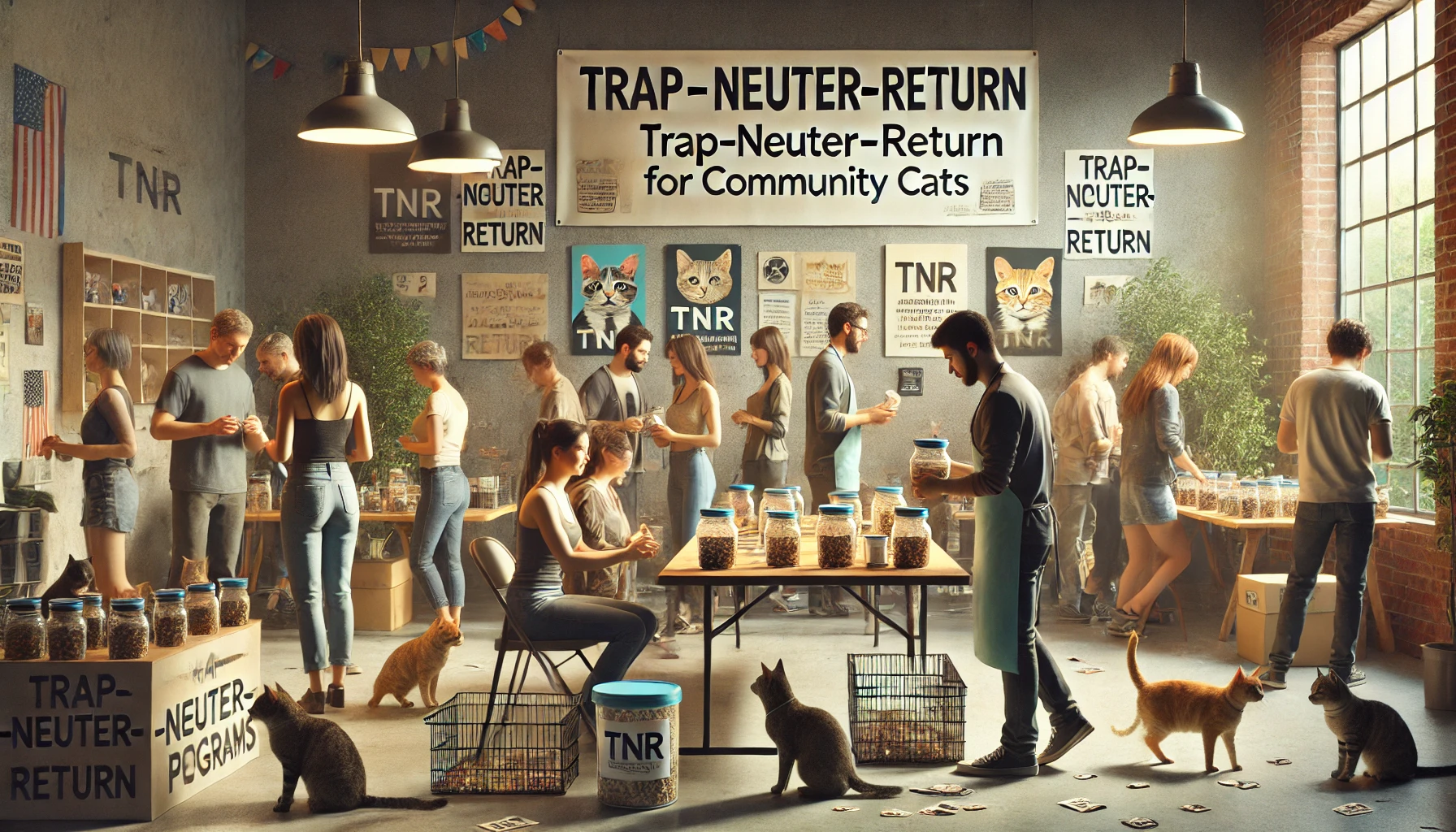
Funding TNR Programs
Trap-Neuter-Return (TNR) programs depend on funding to cover essential expenses, such as veterinary costs, trapping equipment, and educational pamphlets.
Financial support is vital to making these programs viable and successful, helping communities manage cat populations humanely.
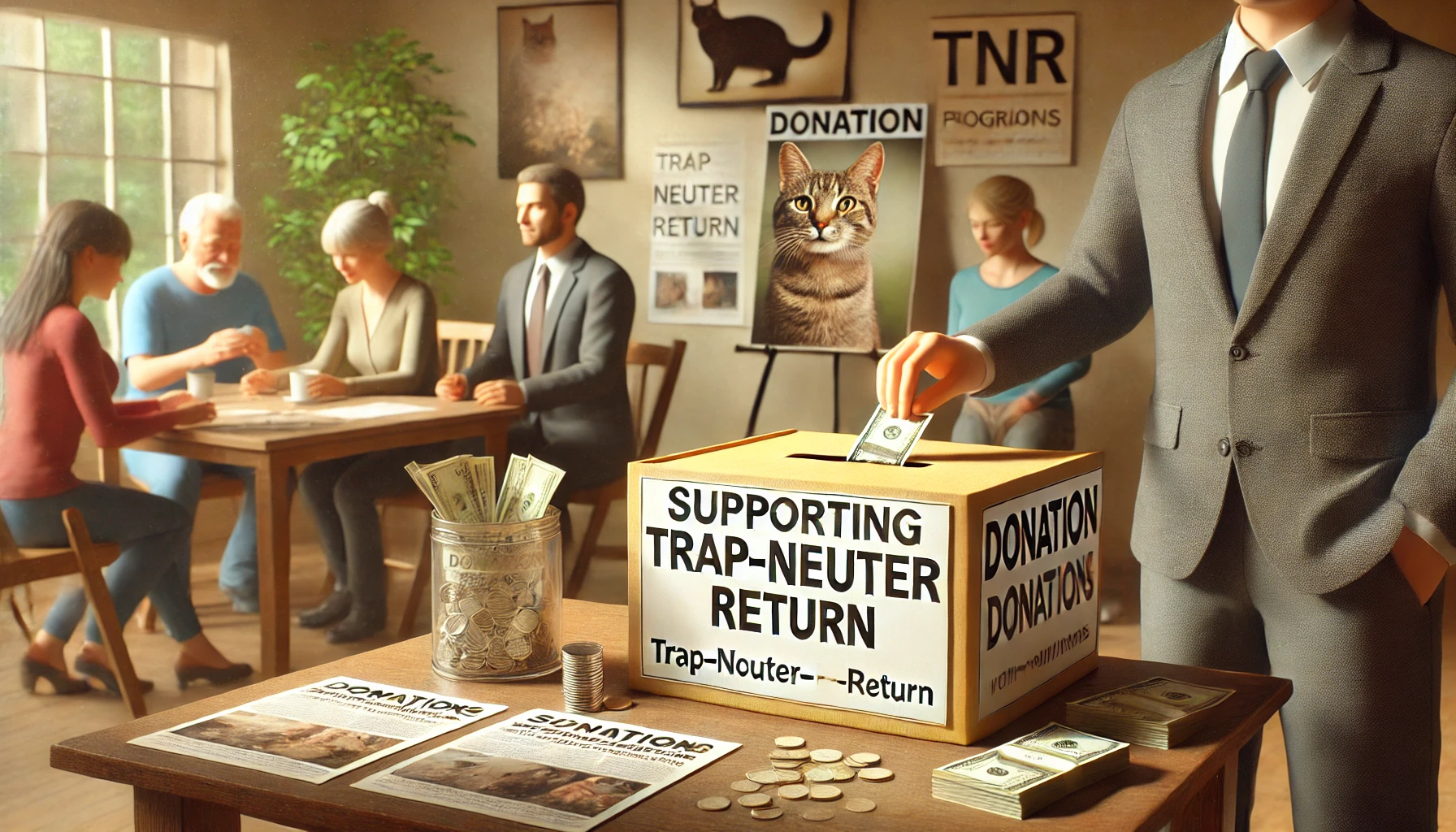
Donating to TNR Organizations
Most animal welfare organizations running TNR programs rely heavily on donations to fund their work.
Your contributions can help cover costs like spay/neuter surgeries, vaccinations, and trap maintenance.
Consider donating to registered organizations involved in TNR efforts to make a meaningful impact.

TNR Fundraising Ideas
Fundraising events provide significant support to TNR programs and can be organized in various ways:
- Community Events: Host events like bake sales, car washes, or charity runs to raise funds and increase awareness about TNR.
- Crowdfunding Websites: Use crowdfunding platforms to expand visibility and enable online donations from a broader audience.
- Partnerships: Collaborate with local businesses to create promotions where a percentage of sales supports TNR programs.
These fundraising methods not only generate financial support but also actively engage the community in humane cat population control.

Sponsorship of Spay/Neuter Operations
Individual sponsorships can make a direct, tangible difference in TNR efforts.
By sponsoring a spay or neuter surgery, you can help reduce the number of kittens born into the community.
Many organizations offer opportunities to fund specific surgeries or entire TNR projects, allowing donors to make an immediate impact.
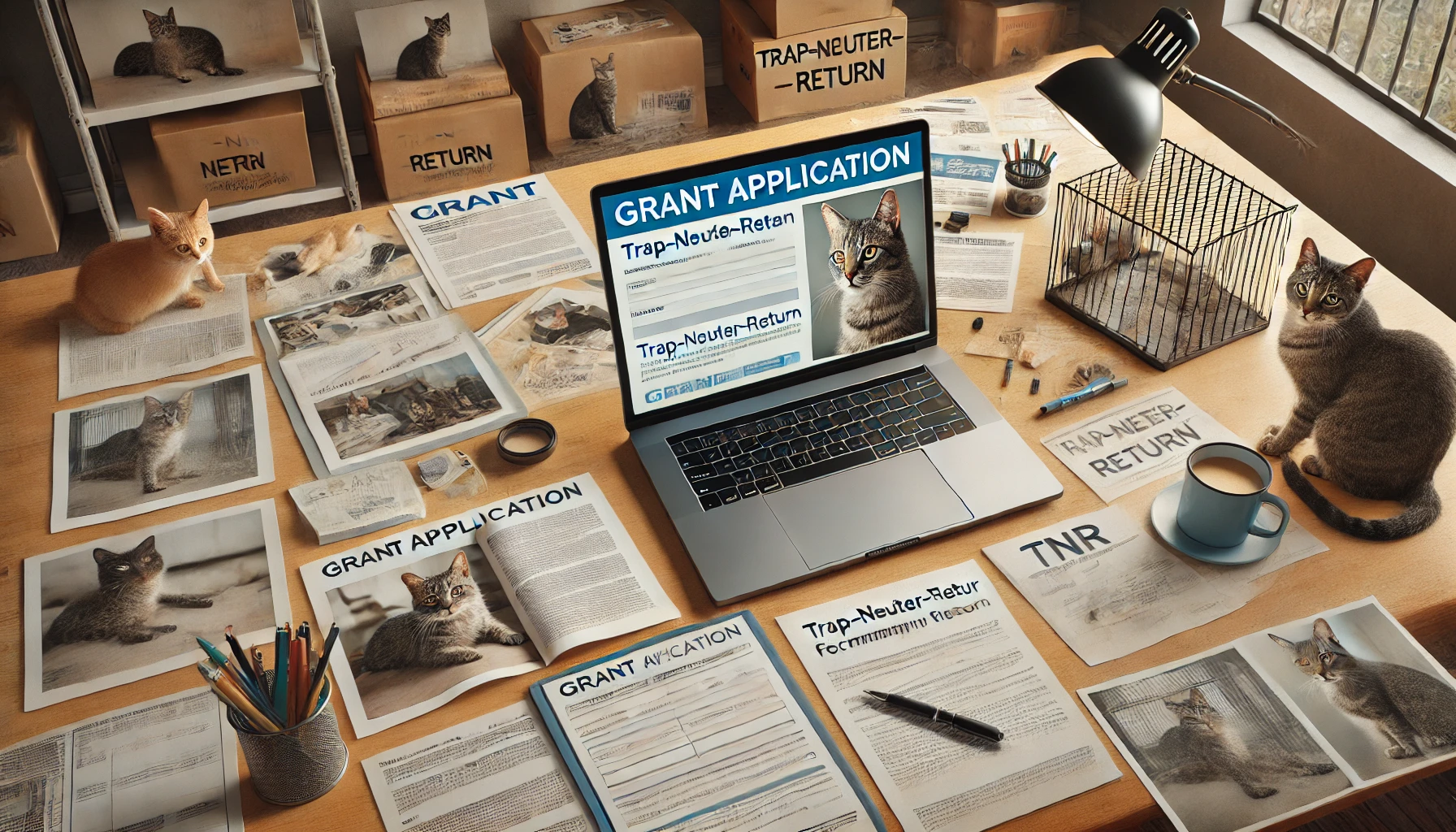
Applying for Grants to Support TNR Efforts
Grants provide substantial funding for TNR programs, particularly from foundations and animal welfare organizations that support spay/neuter initiatives.
For example, the United Spay Alliance’s Community Cat Grants aim to help small organizations expand their fundraising capacity to support more cats.
Exploring these funding channels allows you to contribute to the success and expansion of TNR programs, fostering a more humane approach to community cat population control.
Funding enables the necessary resources for TNR efforts, from spay/neuter surgeries to educational outreach. Every contribution makes a difference.
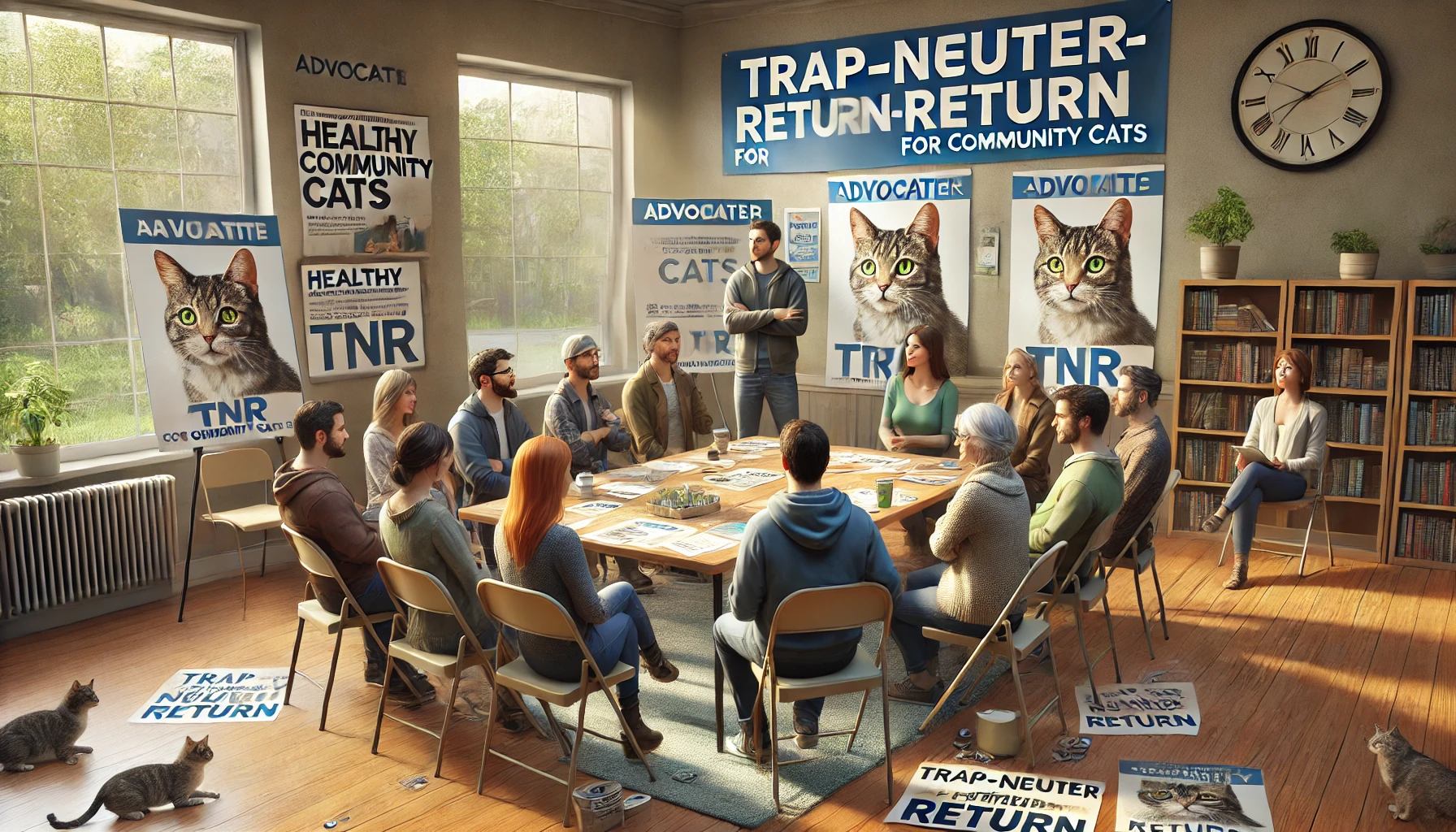
Advocating for TNR in Your Community
The necessity of Trap-Neuter-Return (TNR) programs is key to creating humane and effective management of community cat populations.
Engaging local stakeholders and raising awareness helps in implementing and sustaining TNR initiatives.
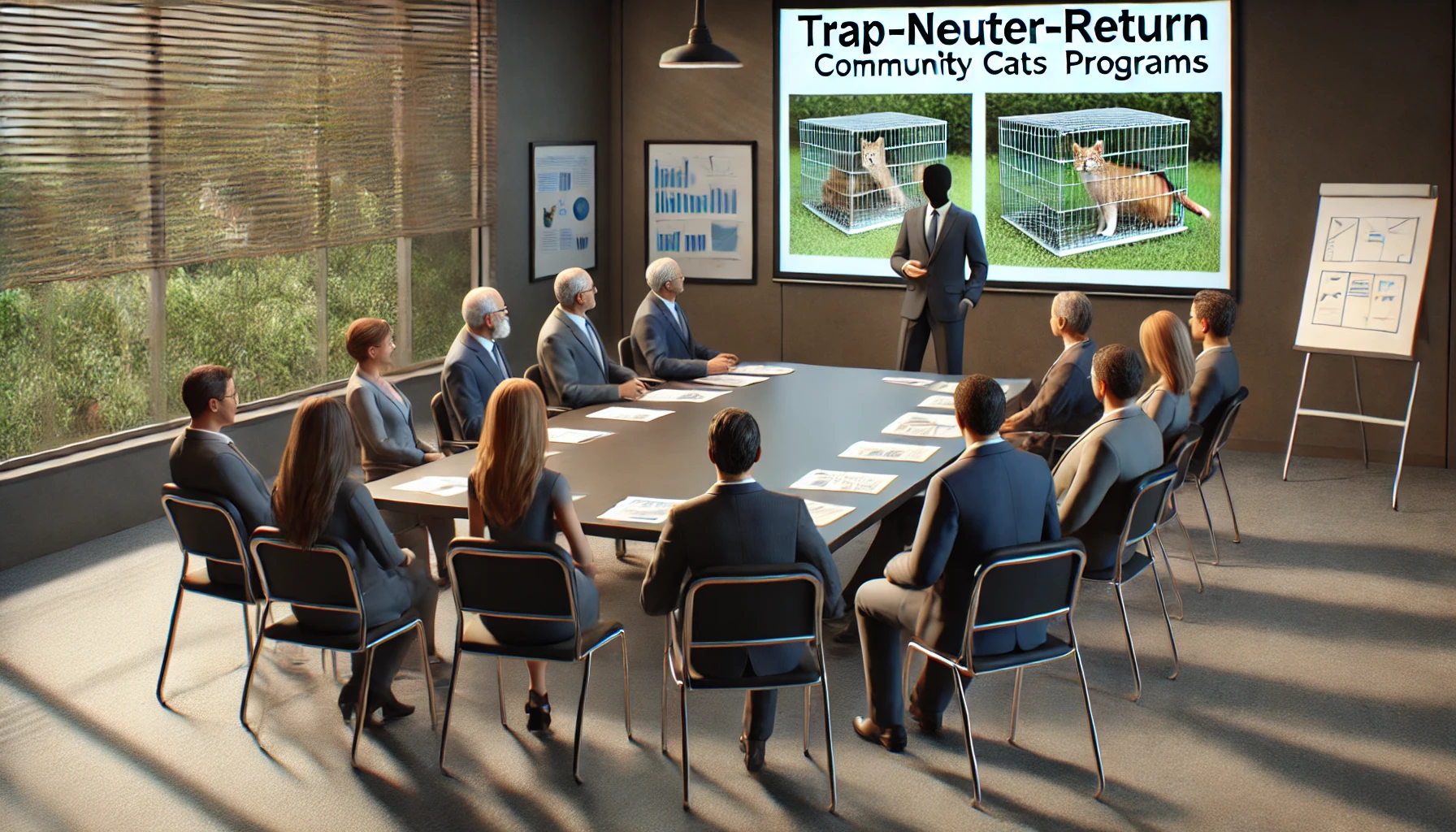
Engaging with Local Government Officials
Building relationships with local government officials is crucial in maintaining successful TNR programs.
Here are some steps to consider:
- Research Existing Policies: Find out what local ordinances are currently in place regarding community cats and TNR.
- Schedule Meetings: Arrange meetings with council members or animal control officers to make a strong argument for using TNR as a solution.
- Provide Proof: Share statistics and success stories from other communities that have successfully implemented TNR.
For instance, Alley Cat Allies offers information on lobbying for TNR and how to effectively communicate arguments to policymakers.

Promoting TNR-Friendly Policies and Legislation
Advocating for policies that support TNR provides long-term sustainability for these programs.
Here’s what you can consider:
- Draft Proposals: Collaborate with local officials to draft ordinances that legalize and support TNR activities.
- Organize Petitions: Gather community support through petitions to demonstrate public backing for TNR-friendly legislation.
- Attend Public Meetings: Participate in city council or community board meetings to express your support for TNR programs.
Organizations like Best Friends Animal Society offer clear guidelines on advocating for community cats and setting up TNR programs in your area.
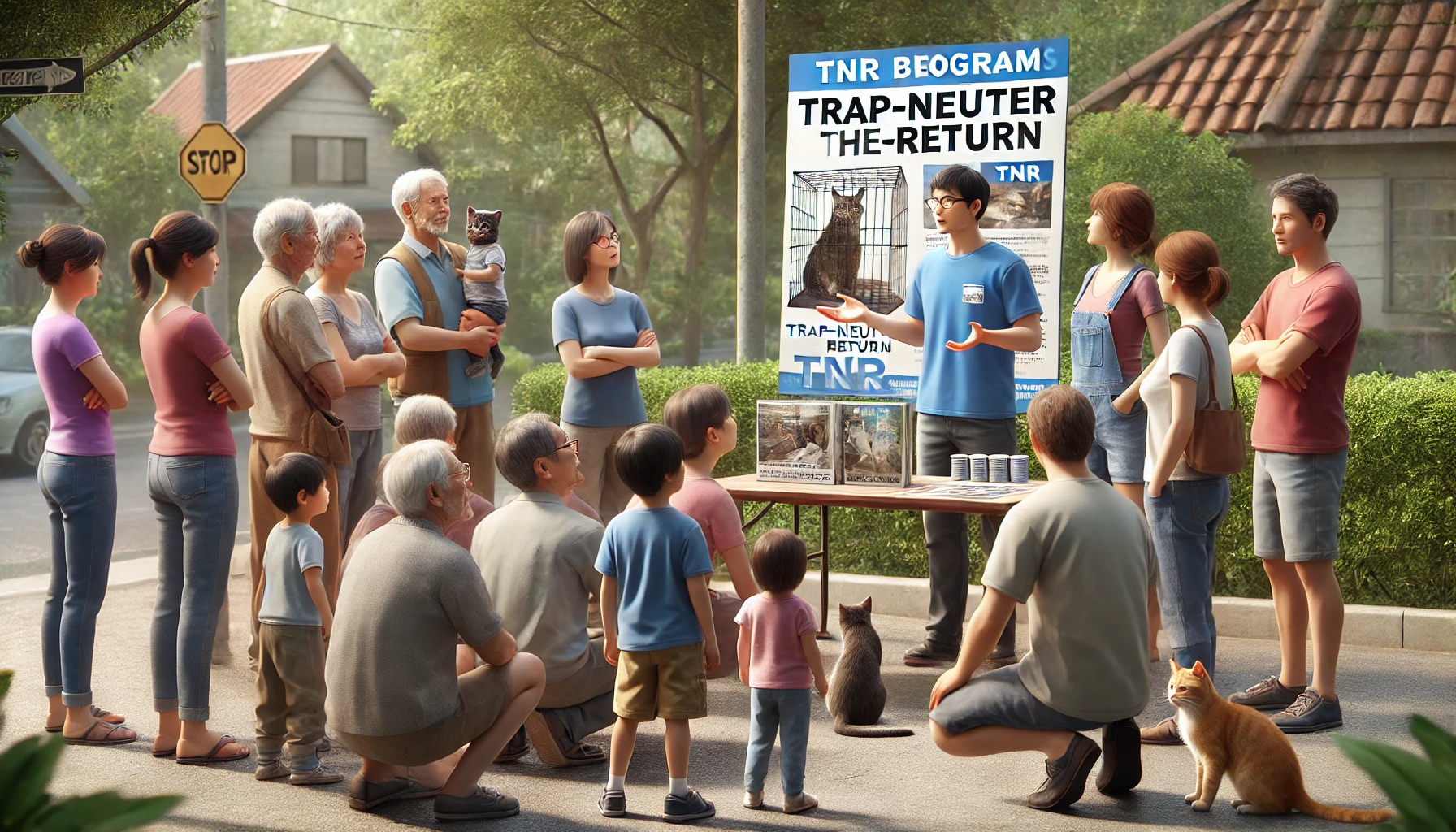
Educating Neighbors About the Importance of TNR
Community acceptance can make a big difference in the success of TNR programs.
Educate your neighbors by:
- Distributing Informational Materials: Hand out brochures or flyers that explain the benefits of TNR.
- Hosting Informational Sessions: Organize workshops or meetings to discuss TNR and answer any questions.
- Utilizing Social Media: Create online groups or pages to share information and success stories about TNR.
Alley Cat Allies provides downloadable TNR factsheets that can be useful for community education.
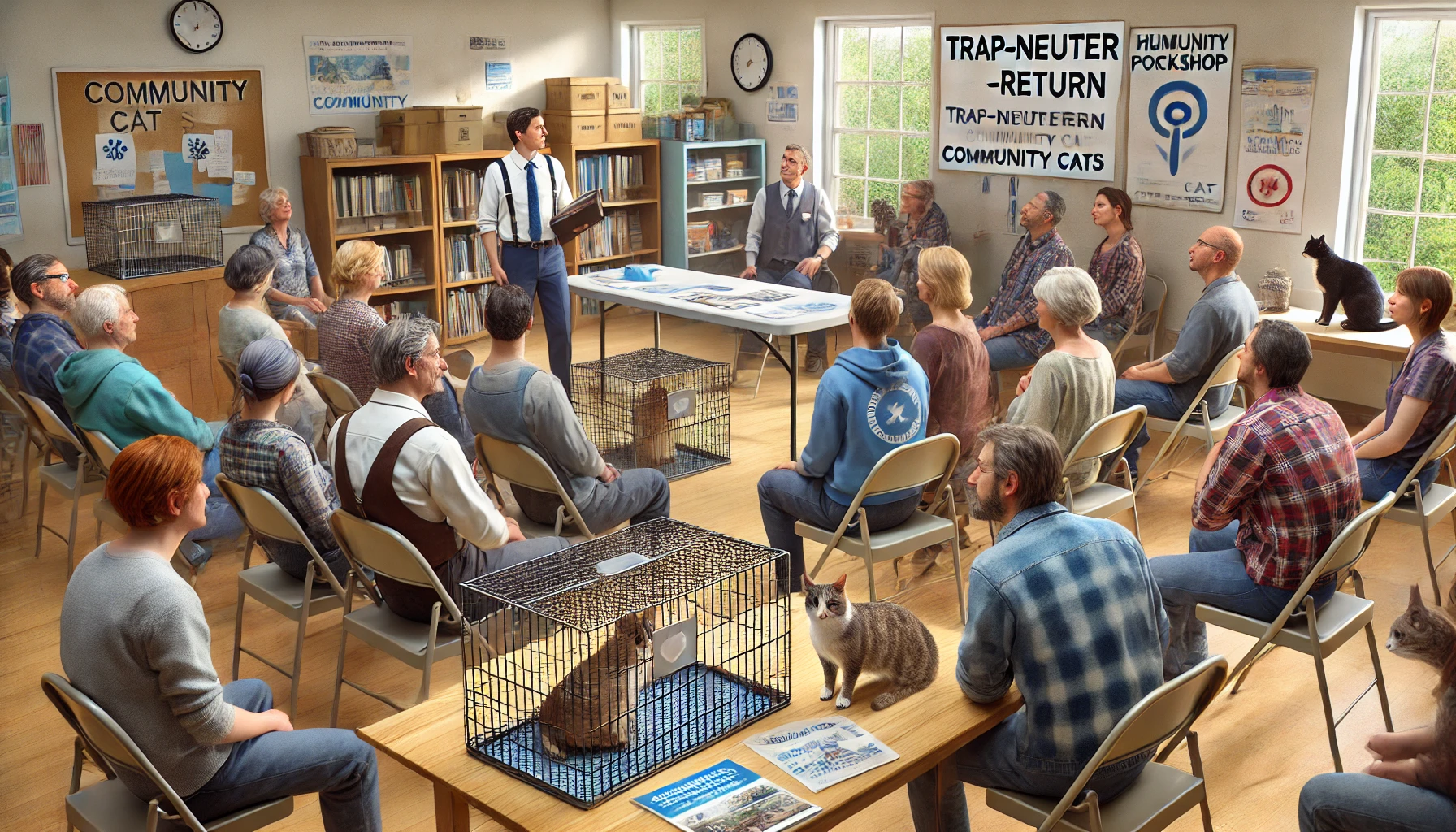
Organizing Workshops and Events within the Community
Events can be organized to raise awareness and involve the community in TNR activities:
- Training Workshops: Offer hands-on workshops for those interested in volunteering in TNR activities.
- Awareness Campaigns: Organize events like “Feral Cat Day” to raise awareness about the need for TNR.
- Fundraising Events: Host charity walks, bake sales, or other events to generate financial support for TNR programs.
By actively contributing to TNR in your community, you create a compassionate environment for both animals and residents.
Engagement with local government and community education helps establish long-term support for TNR initiatives.
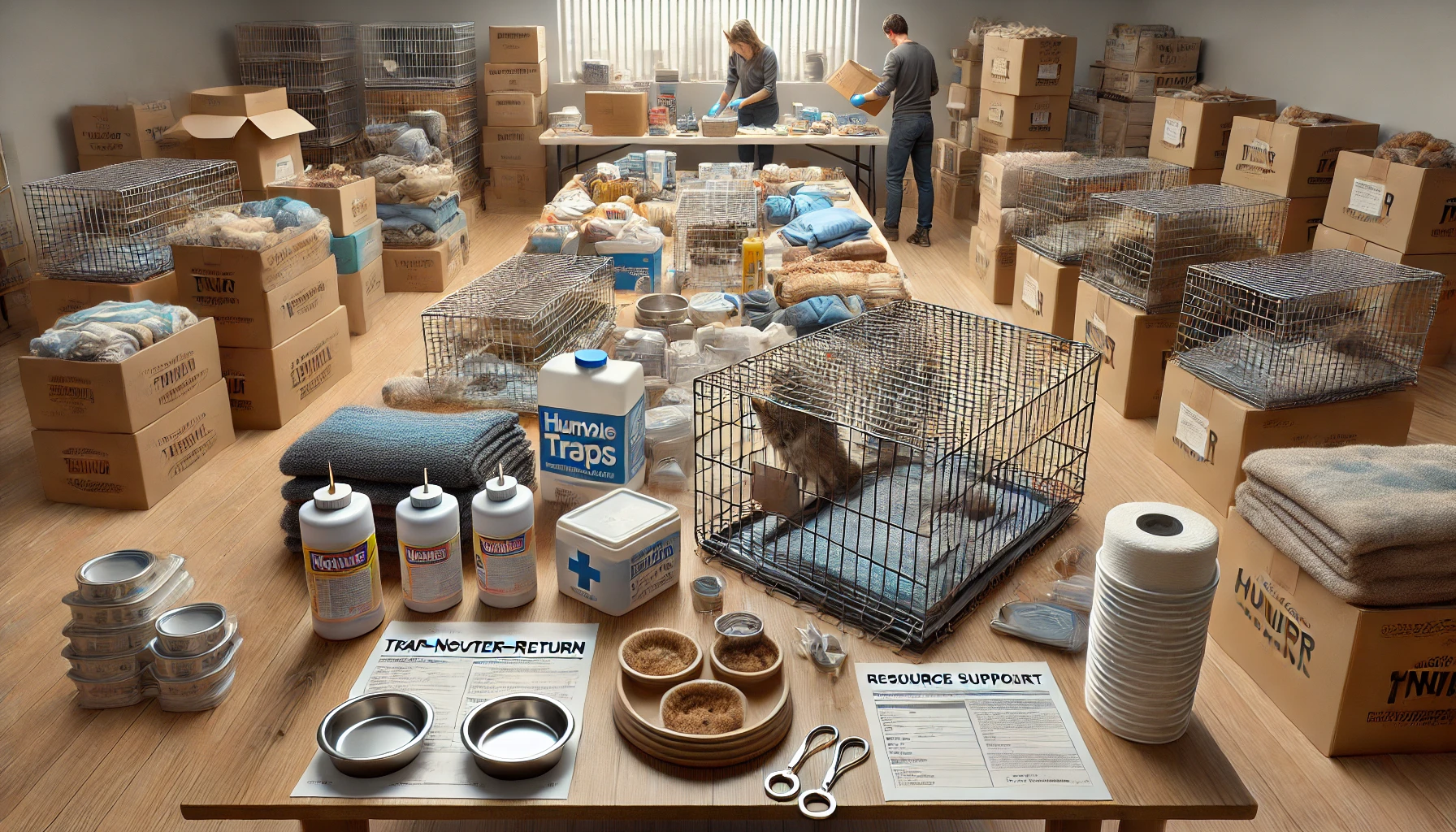
Providing Resources for TNR Programs
Ensuring the success of Trap-Neuter-Return (TNR) programs requires providing essential resources.
By supplying necessary materials and support, you can help these programs succeed in humanely managing community cat populations.

Donating Traps and Equipment
High-quality humane traps are essential for safely capturing community cats for spaying/neutering and releasing them back.
Consider donating the following equipment to local TNR organizations:
- Humane Traps: Durable, reliable traps designed specifically for cats.
- Trap Covers: Blankets or towels to cover traps, minimizing the stress experienced by captured cats.
- Transfer Cages: Secure cages used for transporting cats to and from veterinary clinics.
Organizations like Alley Cat Allies provide guidelines on selecting appropriate trapping equipment to ensure the safety and well-being of the cats.

Veterinary Care and Supplies
Veterinary care is a cornerstone of TNR programs.
You can support these efforts by:
- Providing Pro Bono Services: Veterinarians can contribute by offering free or reduced-cost spay/neuter surgeries and vaccinations.
- Donating Medical Supplies: Contribute items such as surgical gloves, sutures, and vaccines.
- Hosting Spay/Neuter Clinics: Organize events to provide mass sterilization services for community cats.
This collaboration with veterinarians ensures that cats receive the necessary medical attention during the TNR process.

Creating Safe Recovery Spaces
Post-surgery recovery is crucial for the health of spayed or neutered cats.
To facilitate this:
- Set Up Recovery Areas: Provide quiet, climate-controlled spaces where cats can recuperate.
- Supply Recovery Cages: Offer clean, secure cages equipped with bedding and litter boxes.
- Monitor Health: Ensure volunteers are available to observe cats for any postoperative complications.
Appropriate recovery spaces help cats heal effectively before they are returned to their colonies.

Distribution of Educational Materials
Raising awareness about TNR is essential for community support.
You can assist by:
- Printing Informational Brochures: Create materials that describe the benefits and procedures of TNR.
- Developing Training Manuals: Provide guides on best practices in trapping and care for volunteers.
- Hosting Educational Workshops: Organize sessions to educate the public and potential volunteers about TNR.
Educational resources empower the community to participate actively in TNR efforts, leading to more successful outcomes.
By providing these resources, you play a pivotal role in supporting TNR programs, promoting humane treatment, and effective management of community cats.
Donating traps, medical supplies, and educational materials strengthens TNR operations and ensures safe, effective population management.
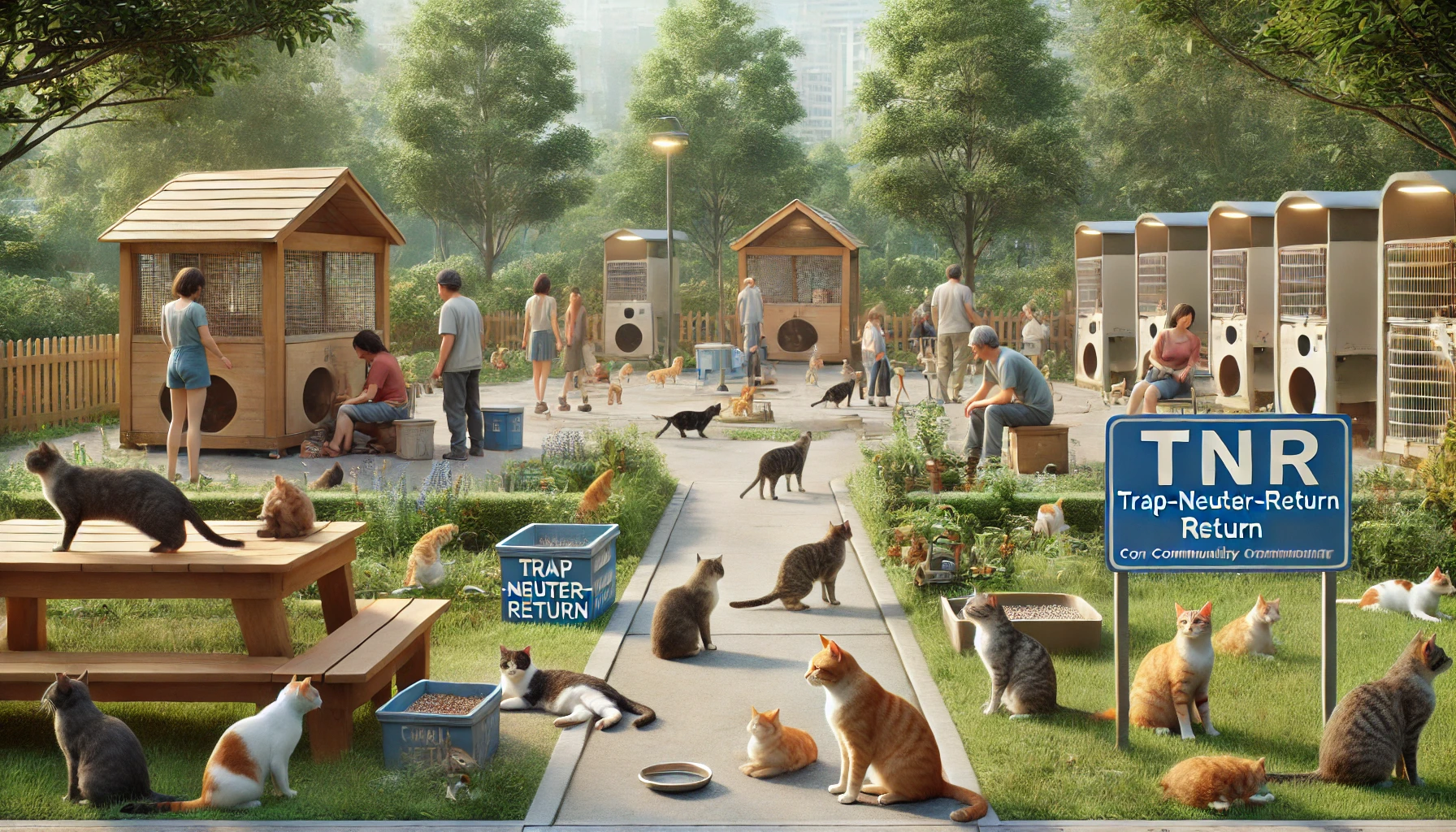
Overview of Supporting TNR Programs for Community Cats
Supporting Trap-Neuter-Return (TNR) programs is a compassionate, effective way to manage and care for community cats.
Both individual and community involvement help address the needs of these cats while fostering healthier, harmonious neighborhoods.
By learning about the goals and processes of TNR, engaging with local stakeholders, and providing needed resources, we can all make a meaningful difference.

How TNR Programs Make a Difference
TNR programs promote humane care and management of community cats.
This involves trapping, neutering/spaying, vaccinating, and returning cats to their original location to stabilize cat populations and improve the health and behavior of these animals.
TNR programs address issues like overpopulation, disease transmission, and disruptive behaviors, creating a balanced environment for both cats and people.
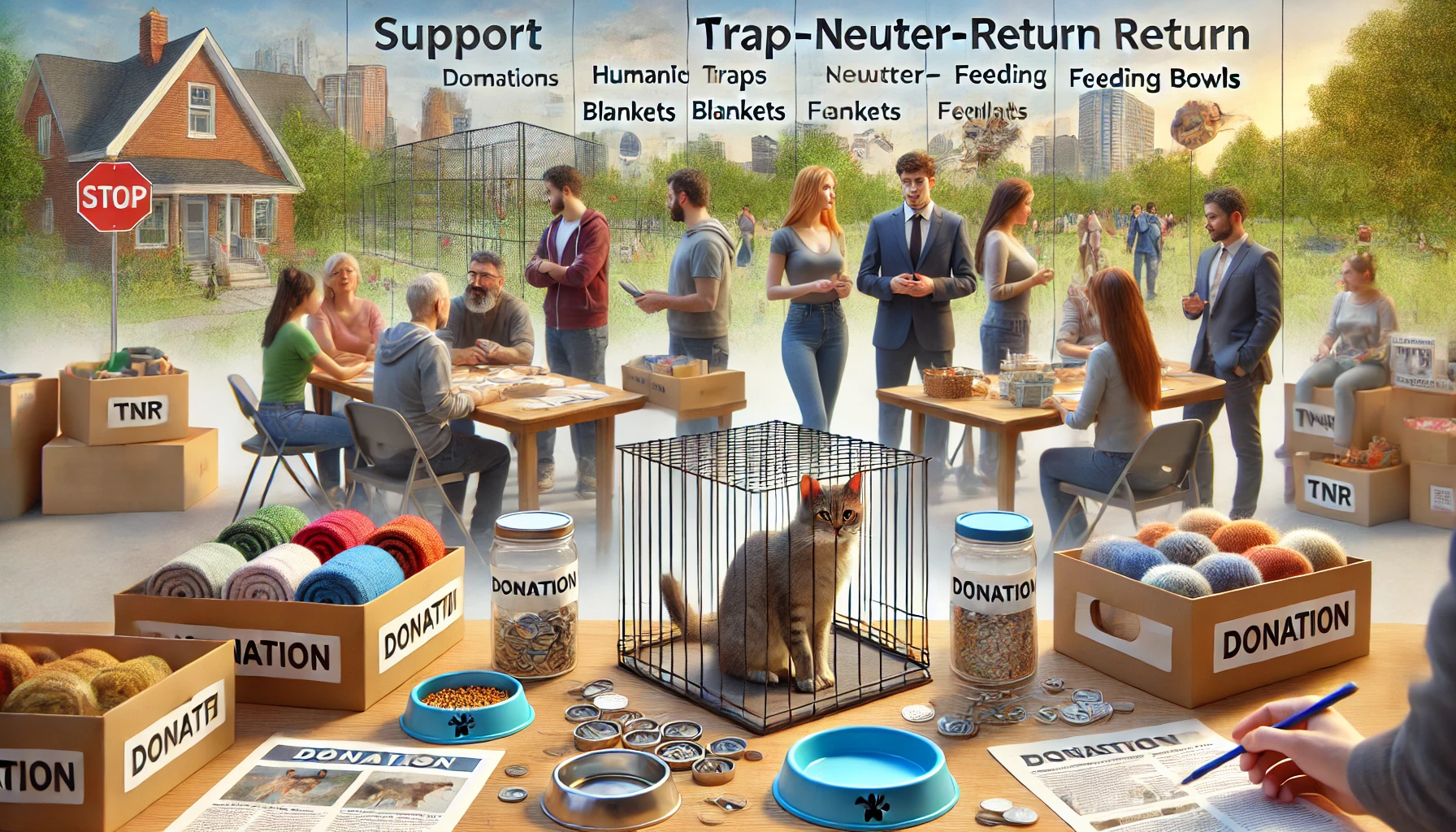
Ways to Support TNR Programs
There are many effective ways to support TNR programs, including:
- Getting Involved: Volunteer with local TNR organizations to assist with trapping, transporting, and postoperative care for community cats.
- Financial Support: Make financial contributions through donations, sponsorships, or fundraising activities. These funds are essential for the sustainability of TNR efforts.
- Advocacy: Promote TNR programs by engaging with government officials, which may lead to the enactment of favorable legislation in support of TNR initiatives and educating the community.
- Providing Resources: Donate equipment, medical supplies, and educational materials to support TNR operations.
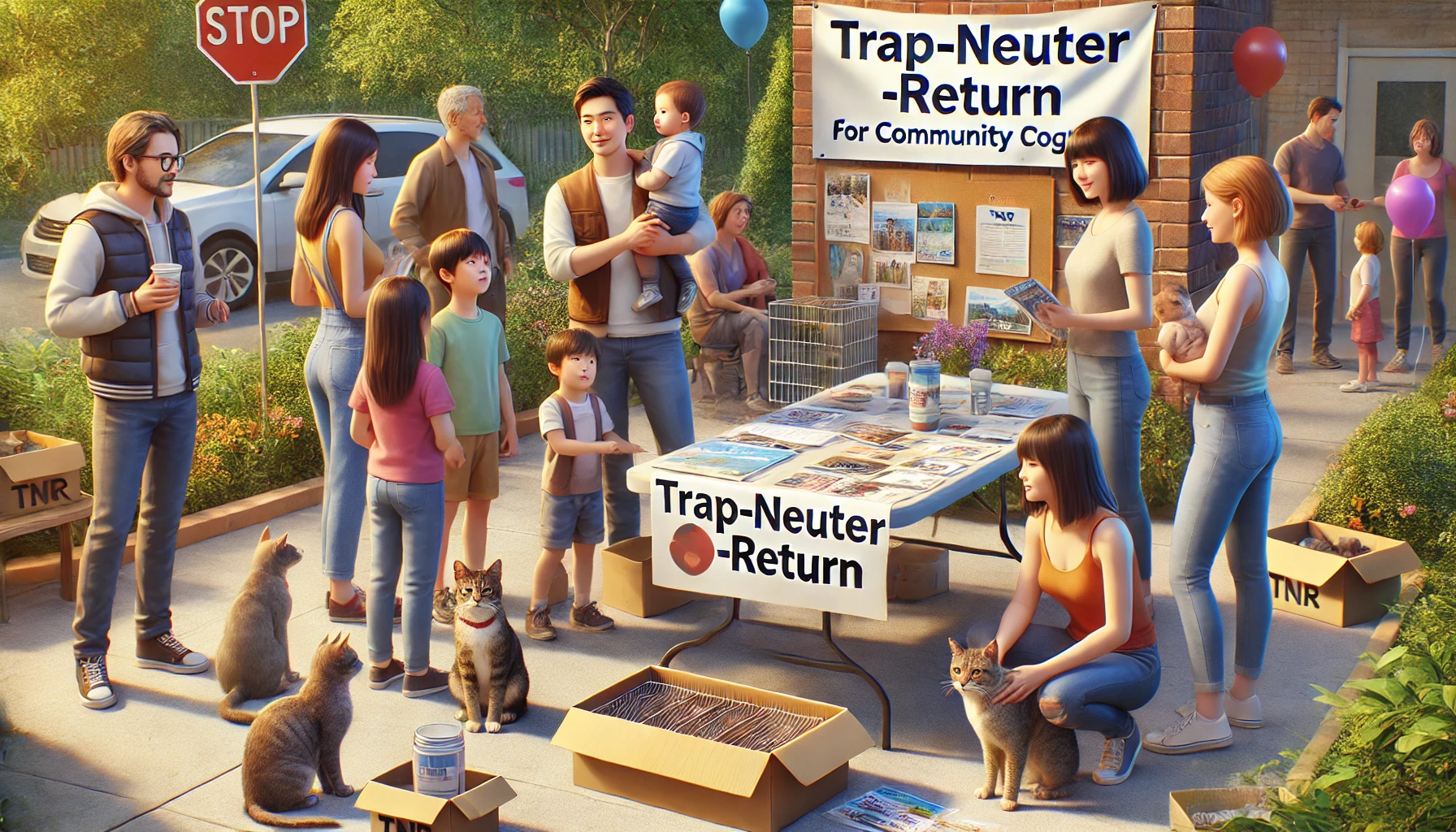
Importance of Community Awareness and Involvement
TNR programs are most successful with strong community awareness and involvement.
Greater support for these humane initiatives arises when people understand the benefits of TNR.
Hosting workshops, distributing informational materials, and engaging with neighbors can help clear up misconceptions and encourage more people to participate, ultimately making a positive impact on local cat populations.
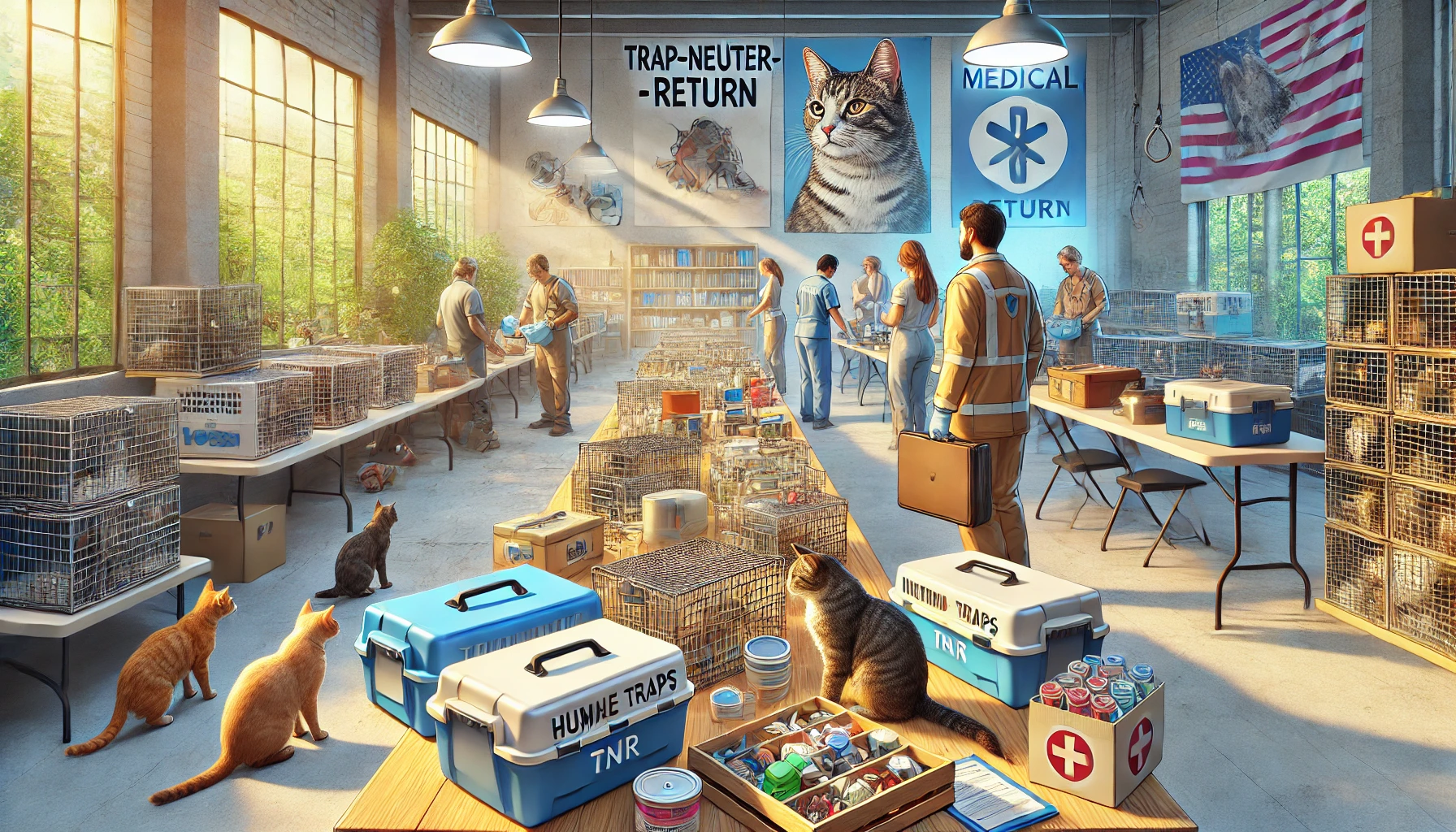
The Role of Resources in TNR Success
Specific resources are essential for a successful TNR program.
Examples of such resources include humane traps, veterinary services, recovery areas, and educational materials that facilitate the smooth execution of a TNR program.
By providing these resources, we directly contribute to the welfare of community cats and help TNR programs achieve healthier cat populations.
In summary, supporting TNR programs allows us to take active steps in the humane treatment of community cats.
Whether through volunteering, donations, advocacy, or education, every effort is valuable.
Committed communities that embrace TNR demonstrate that compassion and effective management can create peaceful coexistence between cats and residents.
Supporting TNR programs is a compassionate approach to managing cat populations, involving community participation, resources, and education.
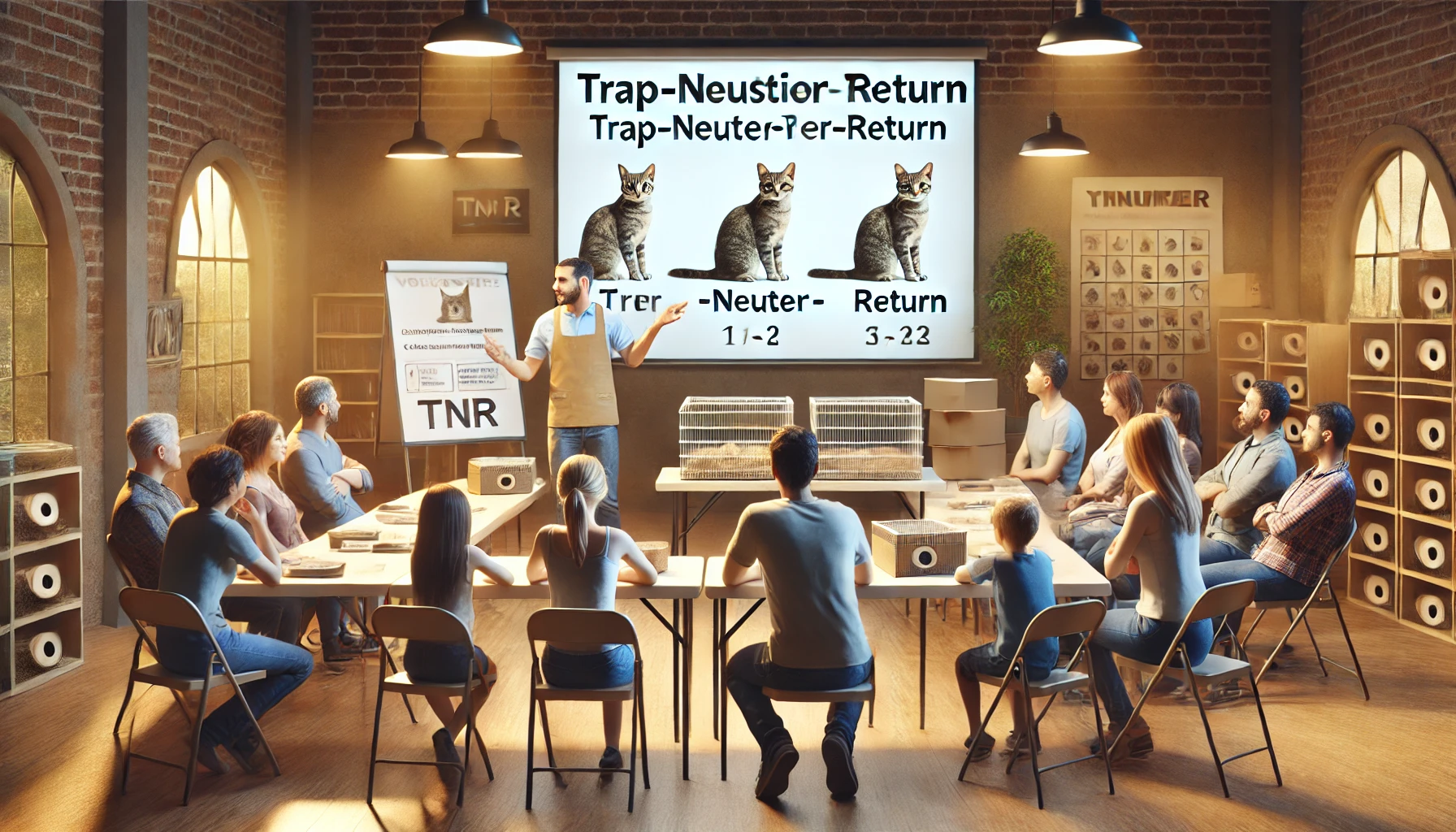
TNR: Frequently Asked Questions
Trap-Neuter-Return, or TNR, is a humane and efficient practice for managing community cat populations.
Here are some frequently asked questions and their answers to help you better understand the concept of TNR.
What is Trap-Neuter-Return (TNR)?
TNR is the humane trapping of community cats, spaying/neutering, vaccinating, and returning them to the same location where they were trapped to manage the population and improve health.
Why is TNR important for community cats?
TNR helps stabilize and reduce cat populations over time, minimizes nuisance behaviors, and improves the overall health of community cats, enabling them to coexist better with humans.
Where can I participate in TNR programs?
You can volunteer with local animal welfare organizations, assist in trapping and transportation, offer post-surgery care, or support these activities through donations and advocacy.
Are there any health benefits for cats undergoing TNR?
Spayed or neutered cats are less likely to develop certain diseases or suffer injuries associated with mating behaviors, leading to healthier, longer lives.
Does TNR help reduce nuisance behaviors?
Yes, it can reduce behaviors such as yowling, spraying, and fighting that result from mating drives, making them better neighbors in the community.
How does TNR benefit the community?
TNR reduces the population of unvaccinated cats, decreases shelter intake, and advances public health by humanely controlling the community cat population.
Can I do TNR myself?
It is best to partner with local TNR groups to ensure proper training, access to veterinary services, and adherence to best practices for the program.
What does a typical outcome look like post-TNR?
After TNR, cats are returned to their original outdoor homes where they continue to live, now healthier and unable to reproduce.
Is TNR legal in all areas?
Laws vary depending on location.
It is important to check your local ordinances and work with organizations familiar with regulations in your area.





